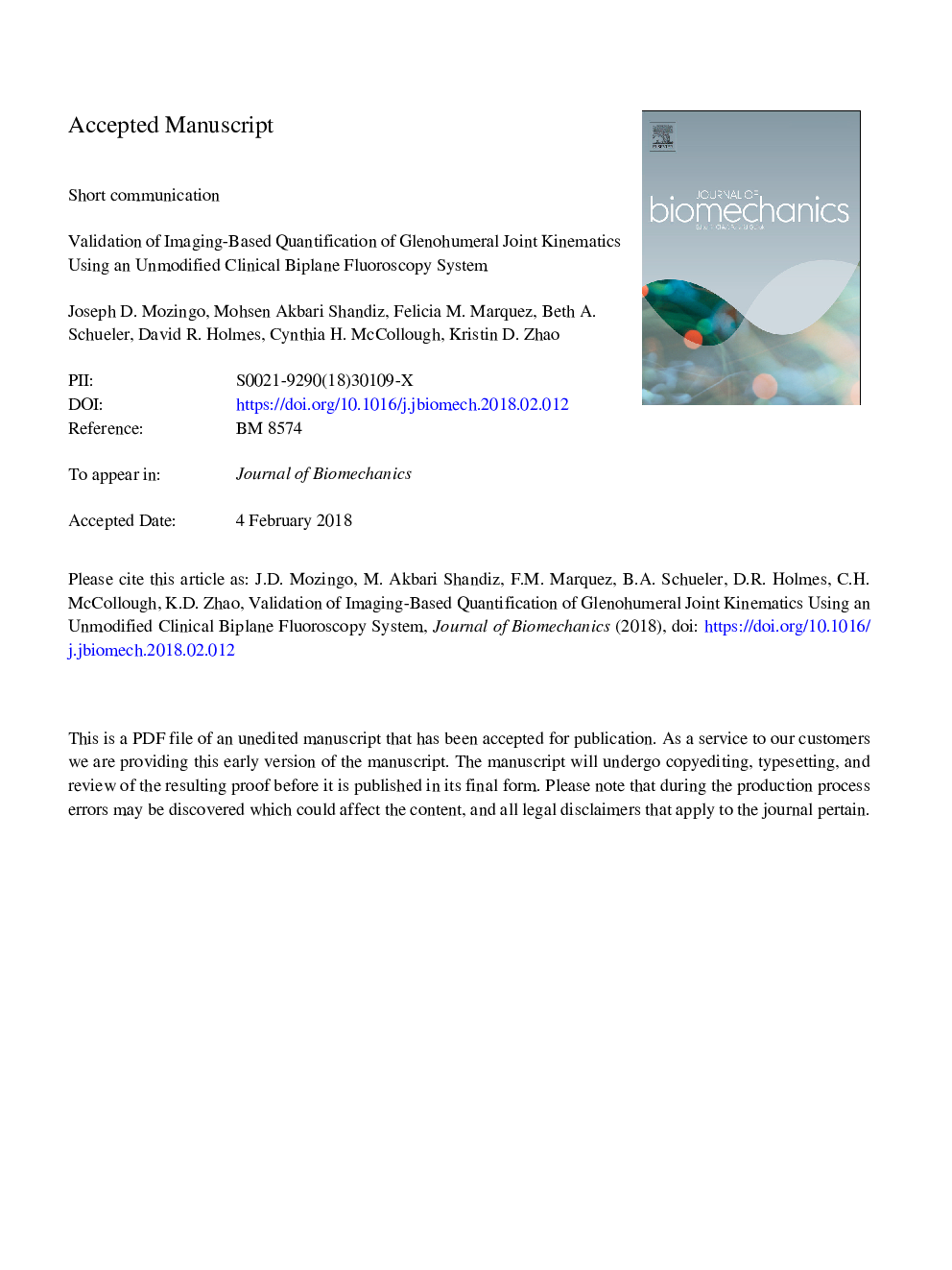| Article ID | Journal | Published Year | Pages | File Type |
|---|---|---|---|---|
| 7236563 | Journal of Biomechanics | 2018 | 26 Pages |
Abstract
Model-based tracking, using CT and biplane fluoroscopy, allows highly accurate quantification of glenohumeral motion and changes in the subacromial space. Previous investigators have used custom-built biplane fluoroscopes designed specifically for kinematic applications, which are available at few institutions and require FDA approval prior to clinical use. The aim of this study was to demonstrate the utility of an off-the-shelf clinical biplane fluoroscope for kinematic applications by validating model-based tracking for measurement of glenohumeral motion using an unmodified clinical system. Biplane images of each shoulder of a cadaver torso were acquired at various joint positions and during simulated movements along anatomical planes of motion. The pose of each humerus and scapula was determined using model-based tracking and compared to a bead-based gold standard. Error due to a temporal-offset between corresponding biplane images, characteristic of clinical biplane systems, was determined by comparison of measured and known relative position of 2 bead clusters of a phantom that was imaged while moved throughout the fluoroscopy image volume. Model-based tracking had global kinematic mean absolute errors of 0.27â¯mm and 0.29° (static), and 0.22-0.32â¯mm and 0.12-0.45° (dynamic). Glenohumeral mean absolute errors were 0.39â¯mm and 0.45° (static), and 0.36-0.42â¯mm and 0.41-0.48° (dynamic). The temporal-offset was predicted to add errors of 0.06-0.85â¯mm and 0.05-0.28° for cadaveric trials for the speeds examined. For defined speeds, sub-millimeter and sub-degree kinematic accuracy and precision were achieved using an unmodified clinical biplane fluoroscope for quantification of glenohumeral motion.
Keywords
Related Topics
Physical Sciences and Engineering
Engineering
Biomedical Engineering
Authors
Joseph D. Mozingo, Mohsen Akbari Shandiz, Felicia M. Marquez, Beth A. Schueler, David R. III, Cynthia H. McCollough, Kristin D. Zhao,
